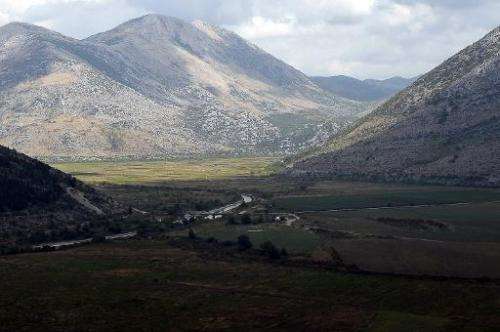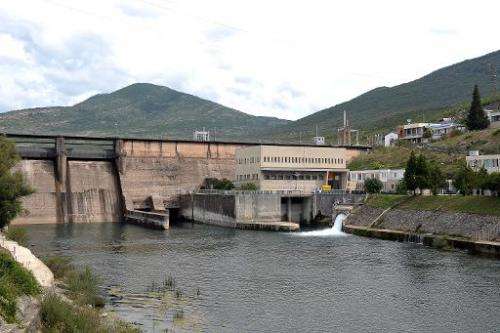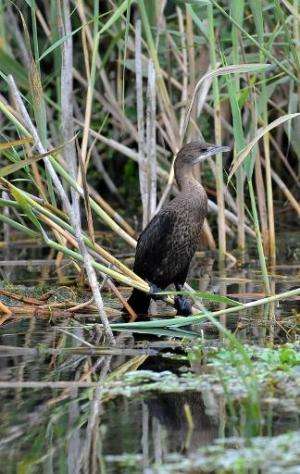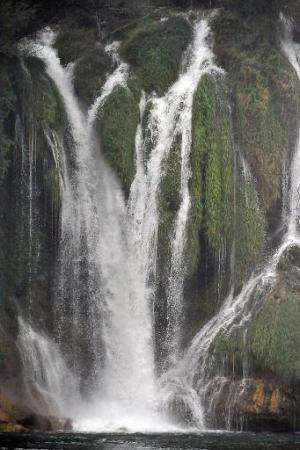Power plant threat to Bosnia oasis

In the mountains of southern Bosnia, a narrow canal carved through dense vegetation leads to a vast lake of crystal blue.
This is Hutovo Blato, one of the largest habitats for migratory birds in the Balkans, a nature reserve stretching over some 7,400 hectares (18,300 acres).
But the pristine landscape could soon be no more than a barren desert, environmental activists and farmers warn, with its water resources under threat from the construction of three hydro-plants in Bosnia and one in neighbouring Croatia.
"This project endangers the last traces of Mediterranean wetlands in the Neretva river delta and we are fighting to protect them," Zoran Mateljak of Bosnia's branch of the WWF environmental group told AFP.
Ornithologist Marinko Dalmatin warned that if the project "is realised, the Hutovo Blato swamp will turn into a peat-bog, a completely degraded zone with no value."
"There will be no more water, all birds and other animals will leave and we will only be able to plant corn here," he said.
The project for a hydro-power system in Bosnia and Croatia was first launched almost 40 years ago. At the time, four plants were built along the Trebisnjica river, which flows into the Adriatic sea, near the famed medieval port of Dubrovnik.
Four more plants were to be built in the countryside behind the Adriatic, but the work was halted by the 1990s Balkan wars and the break-up of the former Yugoslavia.
Now, faced with growing demand for clean energy, Bosnia—one of the six republics that emerged from the communist Yugoslav federation—has resumed construction of the final three plants on its territory.
Croatia has also began work on its new plant, near Dubrovnik.
The Bosnian Serb and Croatian public power companies together want to increase annual production from the current 2,800 gigawatt hours (GWh) per year, to 3,900 GWh.

Investment in the final phase of the system is estimated at almost 800 million euros ($1 billion). The first new Bosnian plant, called "Dabar", is expected to come on line in 2017, producing some 250 GWh of electricity per year, its manager Radivoje Bratic said.
'A salt desert within 15 to 20 years'
Bosnia uses only 30 percent of its hydro power potential, experts say, and is one of the rare electricity exporters in southeastern Europe.
But to feed the new plants requires changing the course of the Zalomka river and its tributaries rivers flowing from mountains to the Hutovo Blato wetlands and the Neretva river delta.
This could spell disaster for the delta, one of the main sources of farmland irrigation in Bosnia and Croatia.
"They do not ask us about anything, the energy lobbies are stronger," said Nikola Zovko, head of the nature park in Hutovo Blato.
A few kilometres (miles) south of Hutovo Blato, fruit-growers and farmers from the region of Metkovic, in Croatia's southern Adriatic coast hinterland, fear their water supply for irrigation will one day run completely dry.
The area is already affected by salinisation of the soil, because farmers are drawing brackish delta water to water their fields.
Reducing the flow of fresh water upstream will further increase the salt component in the water they use.

Environmental activist Zeljko Maric warns the area could become a "salt desert within the next 15 to 20 years."
"If more water is diverted, salinisation will further increase," Maric said.
Mate Kaleb, an agronomist and citrus fruit farmer from Metkovic, said water for irrigation in the Neretva delta already contains 2,000 milligrammes of salt per litre.
"Normal water contains 350 mg per litre, sea water 3,000 to 4,000 mg per litre. The numbers speak for themselves," Kaleb said.
The "Dabar" plant manager, Bratic, said that while the course of surface waters would have to be changed, the consequences for the eco-system would not be disastrous.

"Our goal is to reduce serious effects... and we have also planned measures to intervene if necessary."
Nebojsa Jerkovic, a local official in charge of rural development, estimates that the profit generated by electricity sales from new plants would be the same as from the region's tangerine plantations, around 30 million euros annually.
"For them (the plants' builders), water is not a joint wealth that everyone should benefit from," he charged.
© 2013 AFP
















